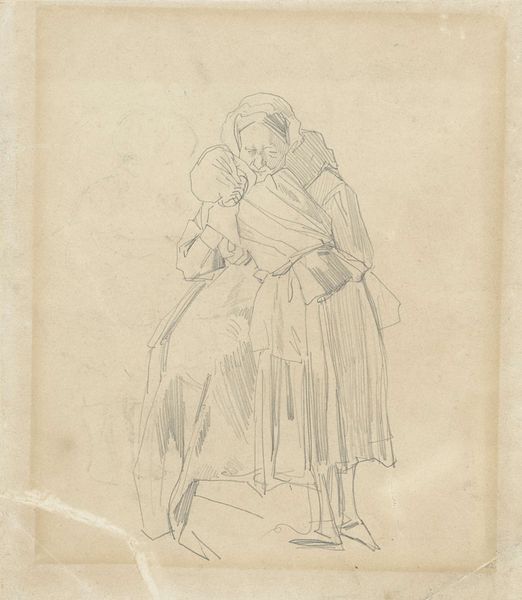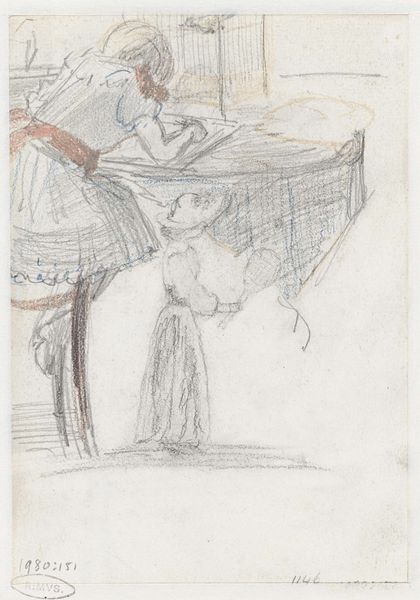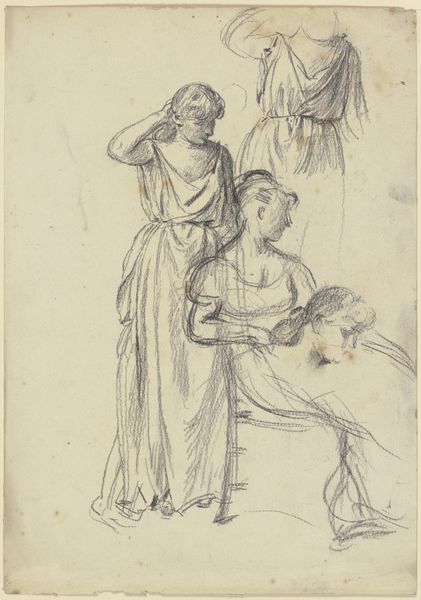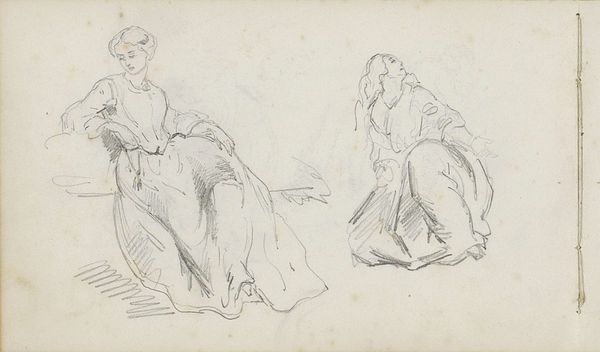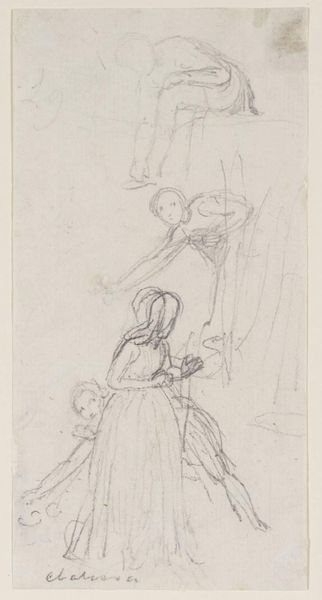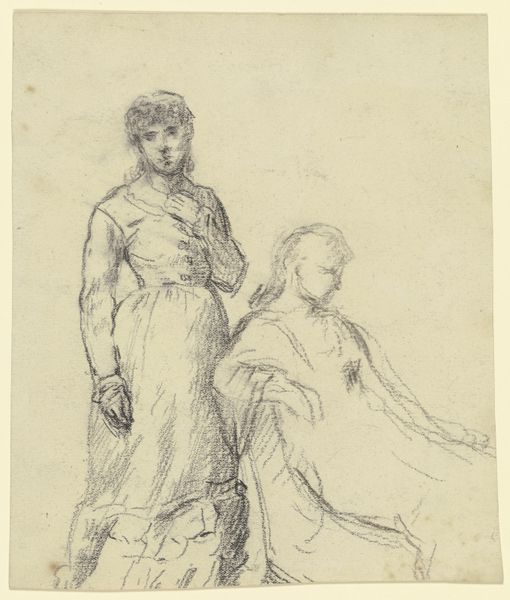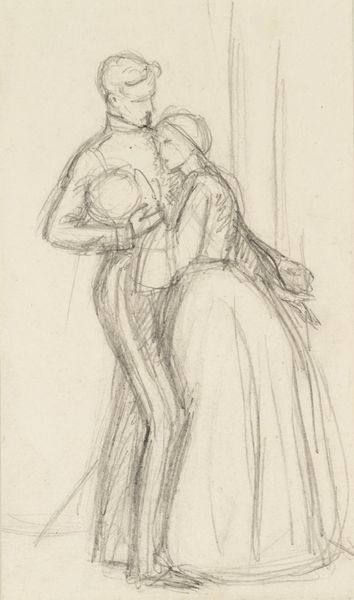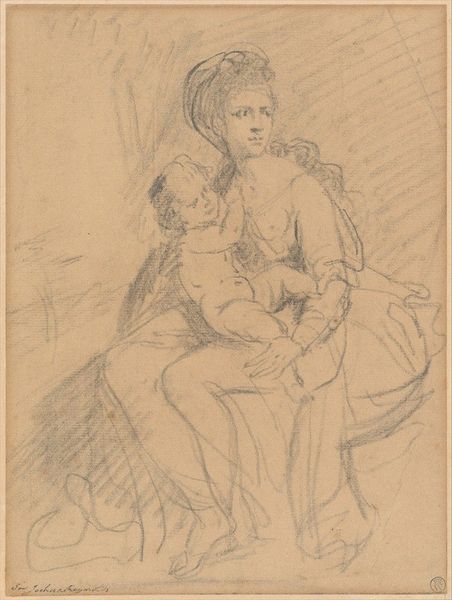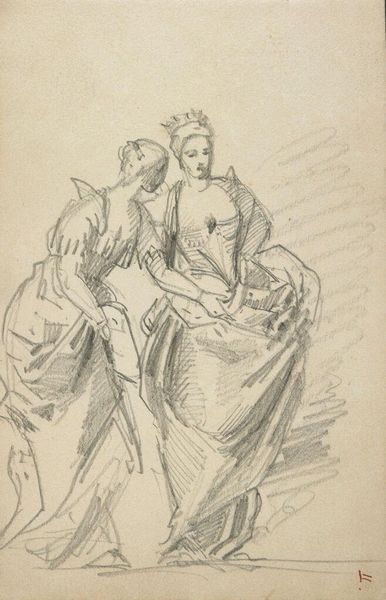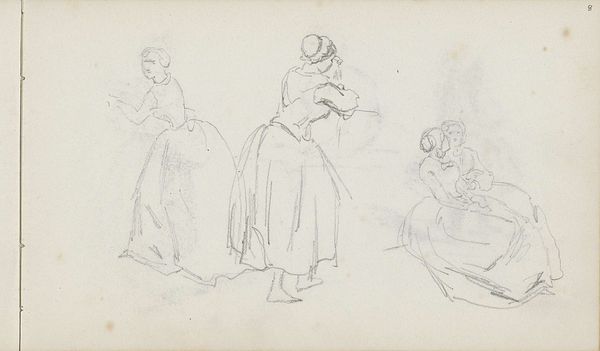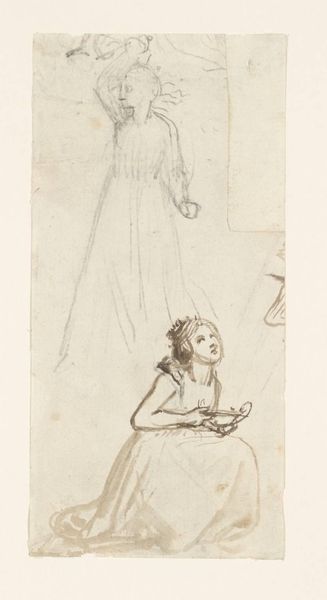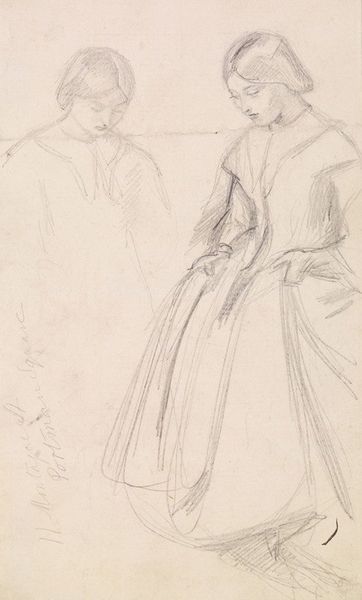
drawing, pencil
#
drawing
#
amateur sketch
#
toned paper
#
light pencil work
#
pencil sketch
#
incomplete sketchy
#
landscape
#
figuration
#
personal sketchbook
#
idea generation sketch
#
pen-ink sketch
#
pencil
#
sketchbook drawing
#
realism
#
initial sketch
Copyright: Rijks Museum: Open Domain
Editor: Here we have "Two Girls with a Pitchfork and Sheaf of Grain," a pencil drawing by Jan Willem van Borselen, created sometime between 1868 and 1878. The sketchy quality makes it feel so immediate, like we're peeking into the artist's working process. What can you tell me about this work? Curator: Well, beyond the surface representation, it speaks volumes about the rural labor force and the artist's choices. Consider the medium: pencil, a readily available and relatively inexpensive material. Its use points to the potential audience and the context in which the piece was made and for whom: perhaps not for the high art market, but for a study, or for teaching? Editor: That's interesting; I hadn't considered the implications of using pencil like that. Curator: Think about the two girls themselves, burdened by the tools and produce of agriculture. The rapid, almost frenetic lines depicting their clothing and the sheaf of grain convey not romanticism, but toil. Borselen, in choosing this subject, engages with the social realities of his time and also highlights his own choices as a maker, setting priorities of observation above that of careful composition. What labor went into this piece, and what kind of labor are the girls undertaking? Editor: So you're suggesting the artwork itself becomes a record of both the artist's and the subjects' labor? The quick strokes convey their work too! Do you think the toned paper plays into that reading, like a common material rather than something precious? Curator: Precisely! The toned paper provides a background that cheapens the art, setting off the value judgements and skills used to show these common girls doing agricultural labor. It’s about bringing what was deemed not worthy into an artist’s studio for further value exploration and discussion through drawing. I see process, material, and social context intertwined here. Editor: I see! I originally focused on the aesthetic qualities of the sketch, but your analysis of materials and subject matter opened my eyes to the broader cultural context and speaks about its social meaning, especially through artistic interpretation!
Comments
No comments
Be the first to comment and join the conversation on the ultimate creative platform.
